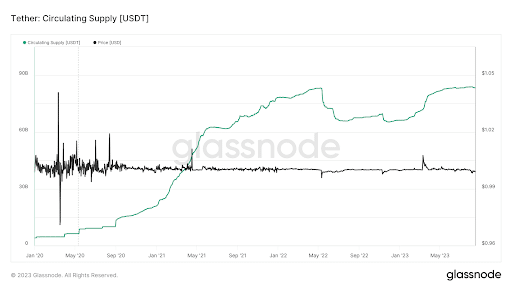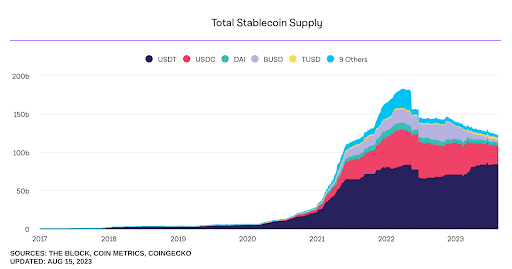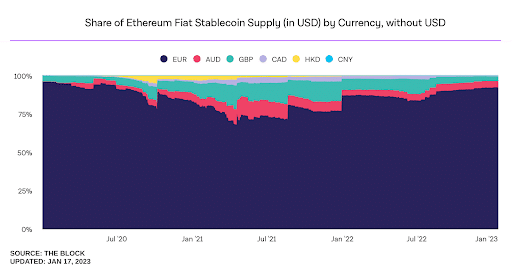Yesterday, the Monetary Authority of Singapore (MAS) officially published what will be the regulatory framework for stablecoin providers who wish to operate legally within the country.
The framework is not intended to downgrade the stablecoin industry, but rather to provide a number of protections to investors in order to limit the risk of insolvency on the part of companies engaged in the issuance of this token topology.
Those who wish to adhere to the Singapore regulatory framework will have to meet certain requirements.
Full details below.
Singapore’s MAS issues framework for stablecoin regulation: all requirements for providers
The central banking institution of the State of Singapore, also known as the Monetary Authority of Singapore (MAS) on Tuesday issued a new framework regarding the regulation of stablecoins within the country.
The work by the regulators started in October 2022 and we have finally reached a turning point.
From now on, any issuer of crypto tokens pegged to the value of the Singapore dollar or any of the G10 currencies, including the euro, dollar, yen, pound sterling and Swiss francs, will have to comply with a number of requirements and ensure a high degree of stability.
In particular, the new stablecoin regulation stipulates that providers will be obliged to maintain a minimum capital base in parallel with other illiquid assets to limit the risk of insolvency.
Moreover, they will have to return the nominal value of single-currency stablecoins (SCS) within five business days to holders who request redemption, as well as to publish in detail the mechanisms for maintaining the peg and minimising volatility.
The results of audits of reserves and the documentation of their custody, as well as information regarding legal rights in the hands of investors, will also have to be adequately communicated to the relevant supervisory bodies.
The ultimate goal is to expand the stablecoin niche within Singapore without running the risk of a colossal failure as happened to UST and its Terra/Luna issuer that caused investors to lose billions of dollars.
In fact, this type of operational regulation, as emphasised by the deputy director-general for financial supervision of the MAS, Ho Hern Shin, is intended to support the cryptocurrency and crypto token market anchored to a central currency. These are his words on the news:
“MAS’s stablecoin framework aims to facilitate the use of stablecoins as a credible digital medium of exchange and as a bridge between fiat and digital asset ecosystems.”
Ho Hern Shin urged all Stablecoin issuers operating in the State of Singapore to adapt early for compliance so as to be ready as soon as the regulation comes into effect.
The MAS also clarified that the issuance, use or circulation of other stablecoins that do not fall within the types described in the framework will not be prohibited, again highlighting its flexibility in this area.
This is its response to the public consultation:
“these stablecoins, including SCS issued outside Singapore or pegged to other currencies or assets, will continue to be subject to the current DPT [Digital Payment Token] regulatory regime.”
The state of the stablecoin market: Tether (USDT) in the lead
Singapore and regulations aside, let’s now take a look at the overall stablecoin market to take stock of the situation.
Since the beginning of the year, the dominance of Tether (USDT) has been increasingly consolidated from $66.2 billion to the current $83.4 billion.
In June in particular, a new all-time high was reached for the asset’s market capitalisation (which coincides with the circulating supply), signalling strong demand for OTC investors amid market uncertainties.

Comparing USDT to other more capitalised stablecoins such as USDC, DAI and BUSD we can see that the former has a 67% dominance.
This is followed by USDC taking the silver medal with 20.8% of the supply within the broader stablecoin market, while DAI and BUSD compete for bronze with 3.17% and 2.7% dominance respectively.It should be noted that BUSD’s presence will surely diminish as time goes on, as a few months ago the SEC ordered Paxos and Binance to stop issuing stablecoin as it constitutes an unregistered financial security.

It is also very interesting to note that outside of the dollar market, which constitutes about 99% of the stablecoins currently in circulation, the euro leads the ranking and is well ahead of the Australian dollar, the British pound, the Canadian currency, the Hong Kong dollar and the Chinese currency.
In particular, the euro dominates this niche with 92%, followed by the Australian dollar with 4% and the British pound with 3%.
These figures show how the market for non-dollar stablecoins, already almost non-existent in terms of capital, is highly concentrated in the euro.
Stablecoins with pegs other than the euro and the dollar are still quite insignificant, with few applications and concentrated around a single issuer.
Within Singapore’s new Stablecoin regulations, however, there are constraints for all cryptocurrencies linked to the value of the Singapore dollar or any G10 currency.
This is because the country probably believes that in the future this scenario will evolve and we will no longer see such dominance.






